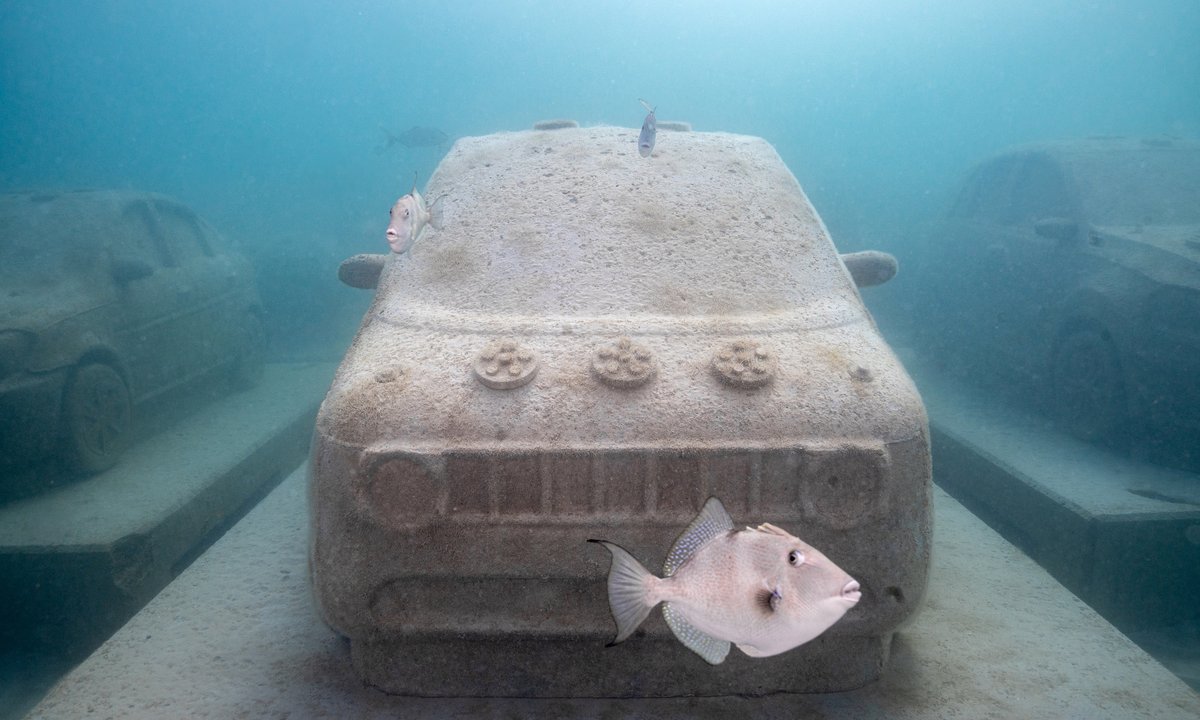
"A large installation by the Argentine artist Leandro Erlich, consisting of 22 submerged marine-grade concrete cars on the ocean floor that seem to drift towards nowhere as the current flows through them, marks the first phase of the Reefline project just off the shores of Miami Beach. This underwater sculpture park, located 21ft below the waves and 600ft from the beach, is designed to resemble a hybrid reef that will support coral regeneration and marine biodiversity."
"Erlich's sculptures were fabricated using 3D-printing technology and are designed to become covered by live corals. Renowned worldwide for sculptures and installations that disorient viewers with trompe l'oeil effects and optical illusions, the artist found an unexpected vanishing point while working on Concrete Coral (2025). "Underwater, this traffic jam colonised by nature looks like a submerged civilisation from the past. It has something of the myth of Atlantis in it," Erlich tells The Art Newspaper. "This work transforms a vehicle of negative impact into something that now serves nature.""
Leandro Erlich installed 22 marine-grade concrete cars on the ocean floor as the inaugural phase of Reefline just off Miami Beach. The installation sits 21ft below the waves and 600ft from the beach and is designed as a hybrid reef to support coral regeneration and marine biodiversity. New art installations will be added over the next ten years until the work reaches seven miles in length. The project was developed by Ximena Caminos with a masterplan by Shohei Shigematsu of OMA. Fabrication used 3D-printing and structures are intended to be colonised by live corals. The site is accessible by swimming, diving, snorkelling, kayaking, or electric paddleboards, and the initiative is led by the BlueLab Preservation Society in partnership with the city and teams of biologists, engineers, and artists as an intersection of public art and long-term ecological infrastructure.
Read at The Art Newspaper - International art news and events
Unable to calculate read time
Collection
[
|
...
]